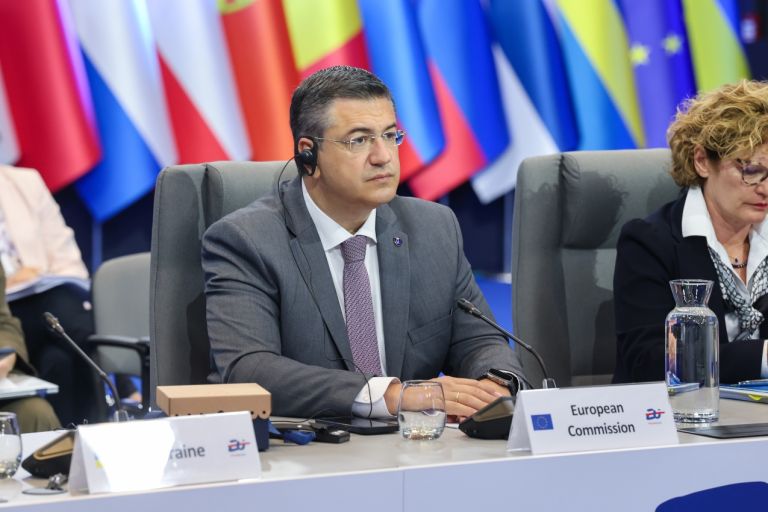Tzitzikostas: EU Upgrades Roads and Railways for NATO Troop Movements

Πηγή Φωτογραφίας: Άτυπη συνάντηση των Υπουργών Τουρισμού της Ευρωπαϊκής Ένωσης, στην Βαρσοβία, Τρίτη 24 Ιουνίου 2025. *ΠΡΟΣΟΧΗ ΜΟΝΟ EDITORIAL USE * (POOL PHOTO/ΕΥΡΩΠΑΪΚΗ ΕΝΩΣΗ/EUROKINISSI
The European Union is planning to invest €17 billion in upgrading its transport infrastructure amid growing concerns that it is unprepared for a potential conflict with Russia, according to the Financial Times.
Speaking to the newspaper, Apostolos Tzitzikostas, the EU Commissioner for Transport, warned that current European roads, bridges, and railway networks are insufficient for the rapid deployment of tanks, troops, and military equipment in the event of a Russian invasion.
“We have old bridges that need upgrading. We have narrow bridges that must be widened. And we have non-existent bridges that need to be built,” said Tzitzikostas, a former regional governor of Central Macedonia.
He emphasized that NATO tanks could become trapped in tunnels or cause bridges to collapse under their weight, or face serious delays due to border bureaucracy.
“The reality today is that moving troops and equipment from Western to Eastern Europe can take weeks or even months in some cases,” he added.
According to the FT report, the EU, in coordination with NATO, has identified 500 critical infrastructure projects across four major military corridors throughout the continent. The objective is to enable troop movements within hours — or at most, a few days, according to the Greek Commissioner. The exact locations of these projects remain classified for security reasons.
One major technical hurdle is the weight of modern tanks, which can reach up to 70 tonnes, while typical European freight trucks are built to carry loads of just 40 tonnes.
Tzitzikostas also said that efforts are underway to reduce bureaucratic obstacles to avoid situations where tanks are “stuck in paperwork” while crossing borders.
This military mobility strategy forms part of broader EU preparations for a potential conflict with Russia, especially amid expectations of a reduced U.S. military presence in Europe in the coming years.
NATO’s new Secretary General, Mark Rutte, warned in June that “Russia may attack a NATO member state by 2030.”
In response, the EU is also considering a massive rearmament plan worth up to €800 billion, driven partly by pressure from Donald Trump for greater European defense autonomy, and partly by the enduring threat from Russia, whose war in Ukraine is now in its fourth year.
Although the European Commission has proposed to allocate €17 billion for military mobility in the 2028–2034 budget period, diplomats caution that the figure could be slashed due to resistance from member states, FT notes.
Still, Tzitzikostas argues the infrastructure plan complements NATO’s new agreement requiring members to raise defense spending to 5% of GDP, with 1.5% earmarked for security-related infrastructure.
“We can no longer afford to be unprepared or to depend on others,” concluded the EU’s Greek Commissioner for Transport.
Δείτε αυτή τη δημοσίευση στο Instagram.Η δημοσίευση κοινοποιήθηκε από το χρήστη Apostolos Tzitzikostas (@atzitzikostas)
Διαβάστε όλες τις τελευταίες Ειδήσεις από την Ελλάδα και τον Κόσμο






Το σχόλιο σας